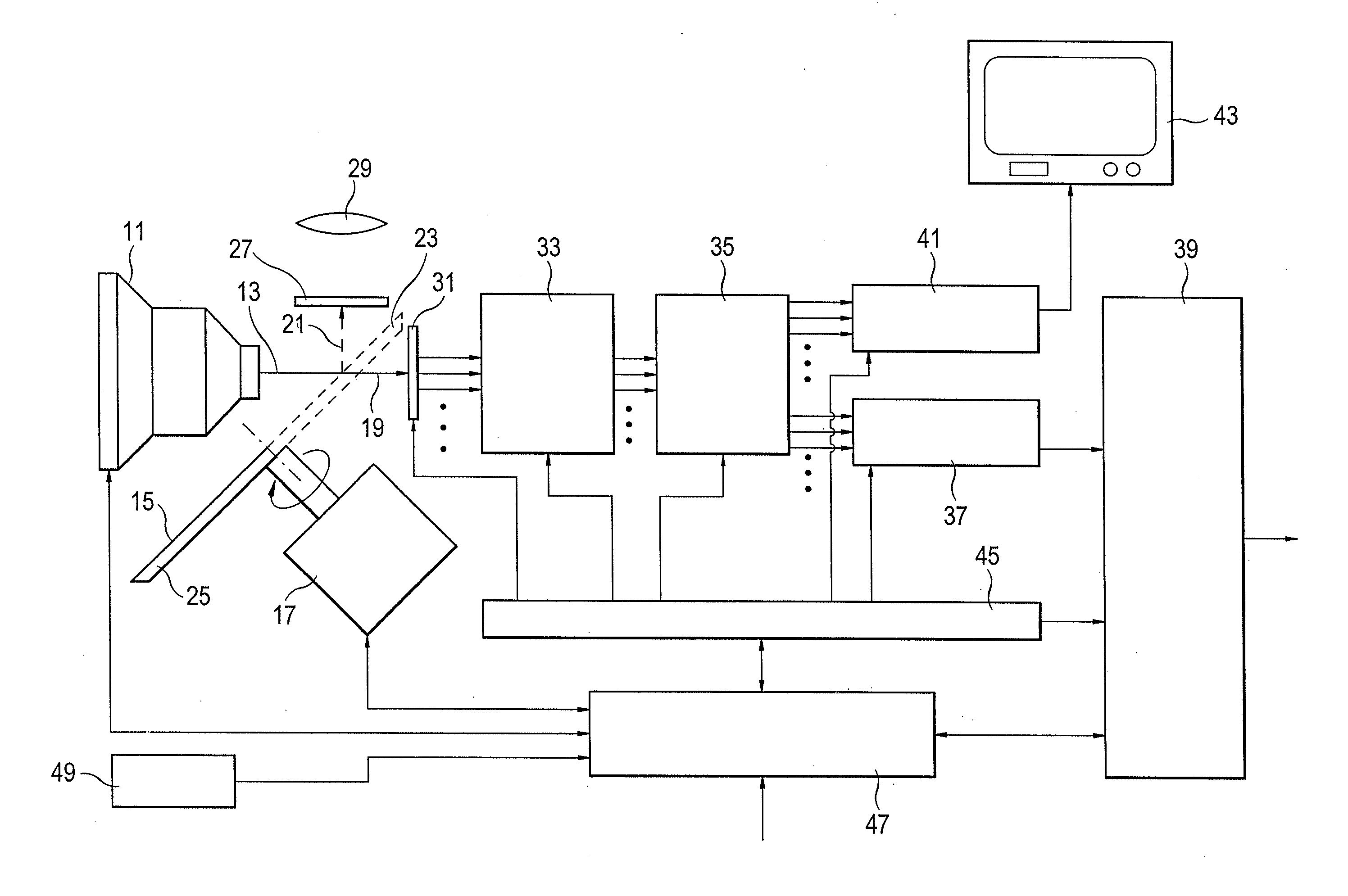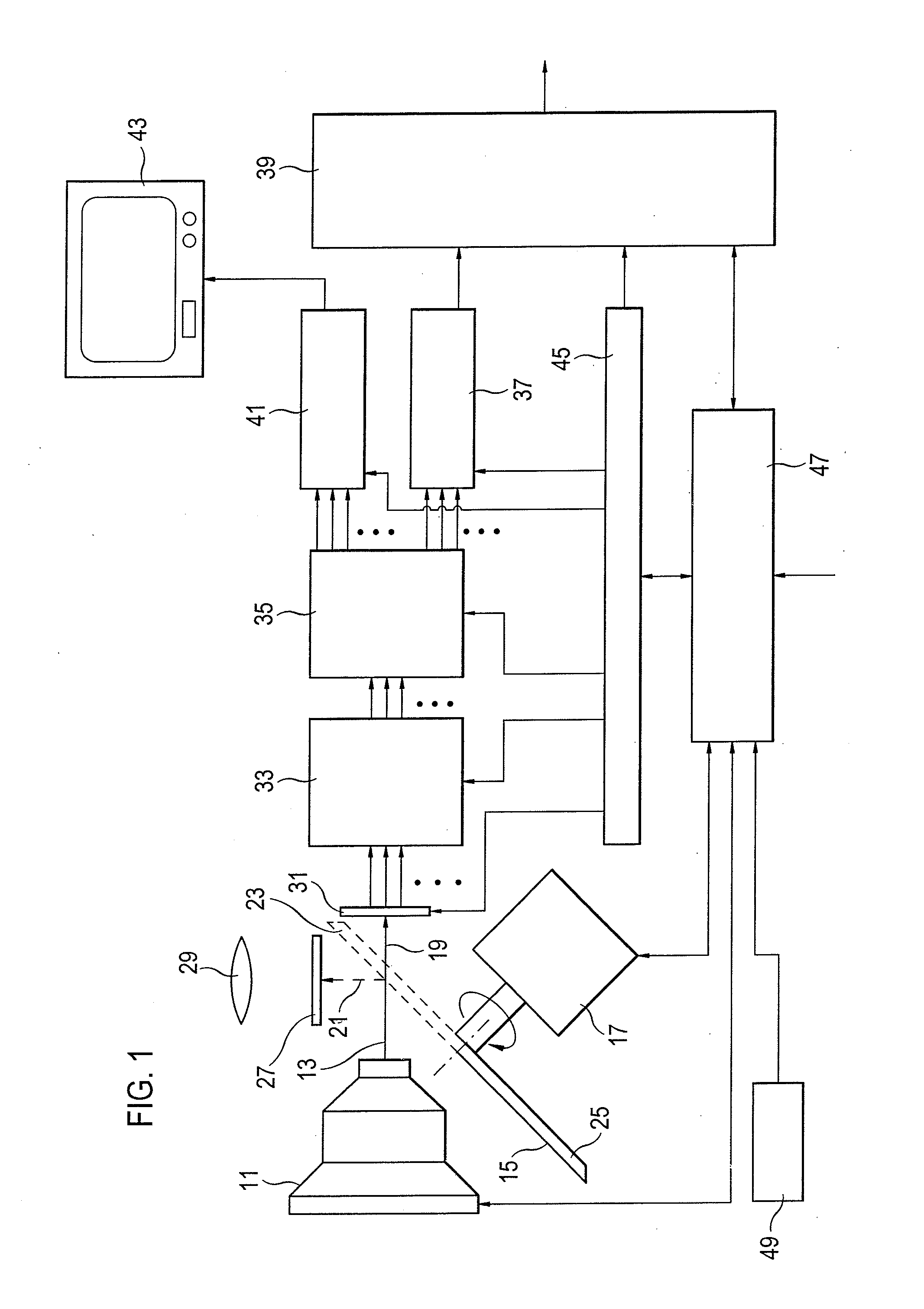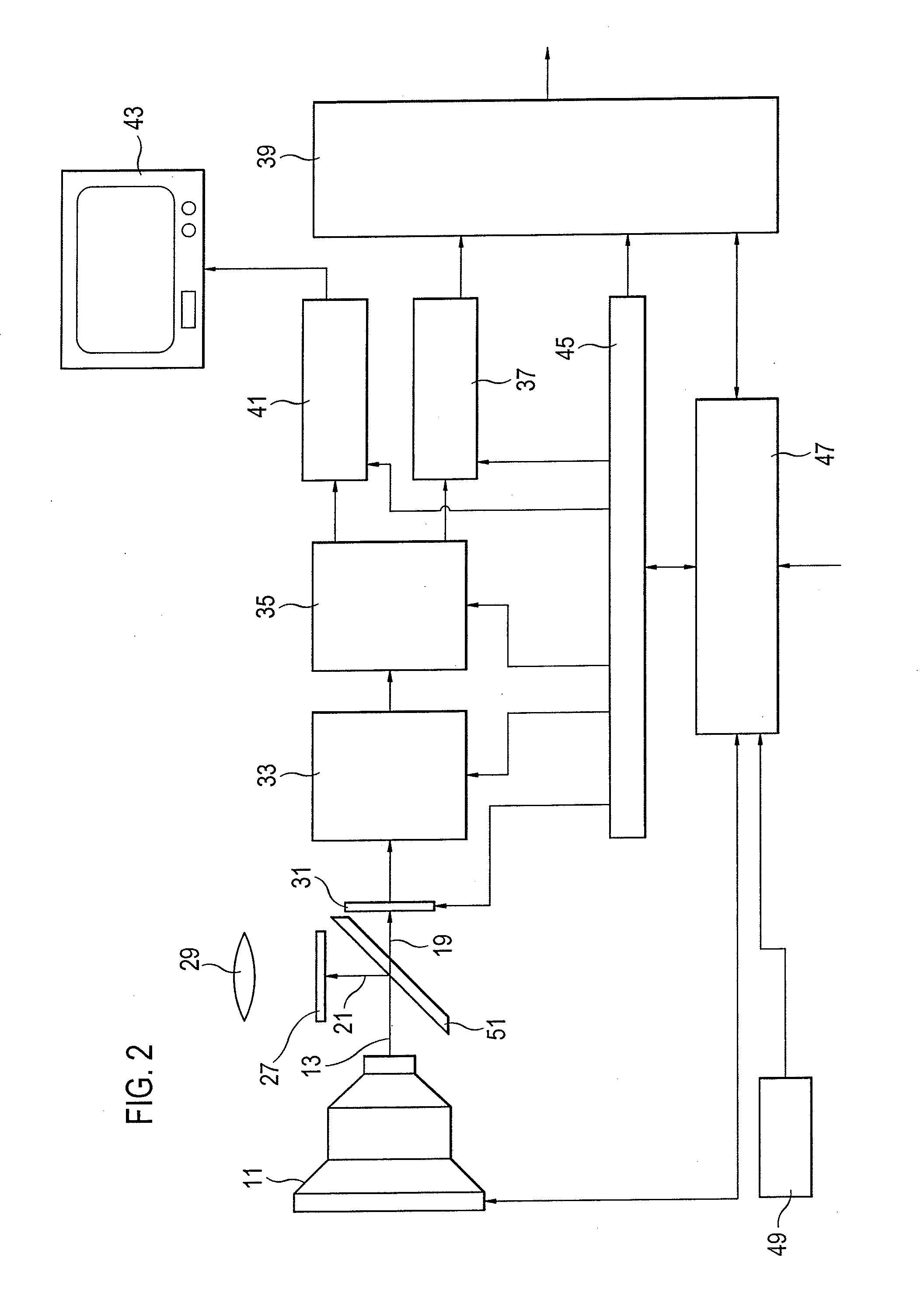Digital camera
a digital camera and camera body technology, applied in the field of motion picture cameras, can solve the problems of inability to use full motion recordings, and inability to meet the demands of video cameras, etc., to achieve the effect of simplifying the interruption-free change of memory devices, reducing the weight of cameras, and increasing data security
- Summary
- Abstract
- Description
- Claims
- Application Information
AI Technical Summary
Benefits of technology
Problems solved by technology
Method used
Image
Examples
Embodiment Construction
[0066]FIG. 1 shows a possible design of the motion picture camera in accordance with the invention. This has a recording optical system 11 which images the motion picture actually to be recorded along a reception beam path 13. The light incident along the reception beam path 13 is alternately transmitted in the direction of a recording beam path 19 or deflected in the direction of a viewfinder beam path 21 by means of a mirror aperture 15 which can be driven by a drive unit 17 to make a rotational movement. For this purpose, the mirror aperture 15 has a trans-mission opening 23 and a mirror coated deflection region 25.
[0067]Provided that the deflection region 25 is located in the reception beam path 13, the picture taken by the recording optical system 11 is imaged on a ground glass screen 27 such that a real image is created on this which can be observed by the cameraman by means of a viewfinder optical system 29.
[0068]In contrast, at the points in time at which—as shown in FIG. 1—...
PUM
 Login to View More
Login to View More Abstract
Description
Claims
Application Information
 Login to View More
Login to View More - R&D
- Intellectual Property
- Life Sciences
- Materials
- Tech Scout
- Unparalleled Data Quality
- Higher Quality Content
- 60% Fewer Hallucinations
Browse by: Latest US Patents, China's latest patents, Technical Efficacy Thesaurus, Application Domain, Technology Topic, Popular Technical Reports.
© 2025 PatSnap. All rights reserved.Legal|Privacy policy|Modern Slavery Act Transparency Statement|Sitemap|About US| Contact US: help@patsnap.com



